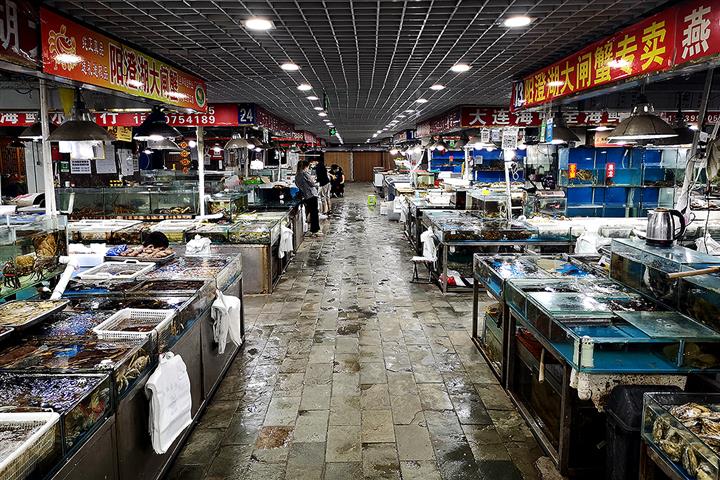 China’s Salmon Importers to Lose Millions Due to Fish Market Virus Cluster, Insider Says
China’s Salmon Importers to Lose Millions Due to Fish Market Virus Cluster, Insider Says(Yicai Global) June 16 -- China’s salmon importers stand to lose hundreds of millions of US dollars after a new cluster of the novel coronavirus was found on boards used when cutting up the fish in Beijing’s biggest wholesale food market over the weekend, sparking a swathe of bans and extra testing, Global Times reported today.
Beijing customs authorities have halted the import of all seafood products, while many cities including Shanghai now require all imported salmon to undergo nucleic acid tests, adding an extra one to two days to delivery times, the report said.
As a fresh food, salmon stocks cannot last for long without proper storage, the report said, citing Eason Li, the China general manager of Norwegian salmon and trout producer Hofseth International. This means that for those orders already in place, the importer must pay for uninterrupted cold storage on arrival in China and might even lose all their stock should it pass the expiration date. So far, there have been no further positive tests.
On top of this, many restaurants and supermarkets across the country have removed salmon from their menus and shelves. This puts front-line dealers and wholesalers under great pressure, Li said. Some have tons of salmon in hand which they are now unable to sell. Prices are also crashing, he added.
"When I first saw the news, I didn't think it would affect our stock in Shanghai,” Li said. “But the impact has been rapid.
"All the customers who were able to cancel their orders chose to cancel them, and those whose goods were in transit began to negotiate with us for postponed delivery or price reductions,” he added.
"Blaming salmon for the outbreak in Beijing Xinfadi Market is unfair without unambiguous evidence," Li said.
Salmon and other seafood cannot host the virus, only mammals can, but they could have the virus on their surfaces due to the surrounding environment, a virologist told Yicai Global. He recommended not eat uncooked salmon for the time being.
Genetic sequencing shows that the virus in Xinfadi came from Europe, but the specific route of transmission has yet to be determined, Yang Peng, an expert from the Beijing Center for Disease Control, told state broadcaster CCTV on June 14. It may be from contaminated seafood or meat products, or infected humans entering the market, he added.
China imports about 100,000 tons of salmon each year, most of which comes from Chile, Norway, Australia and Canada, according to the fishery information website Salmon Business. Norway is the biggest player, accounting for almost half of China’s imports of the fish in the first four months of this year.
Editor: Kim Taylor